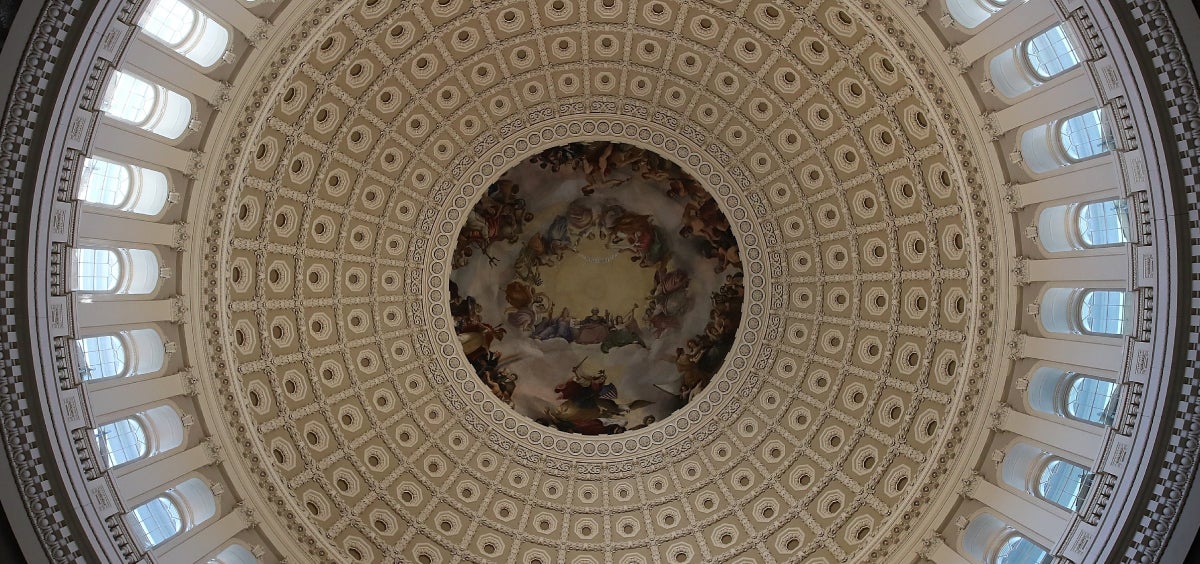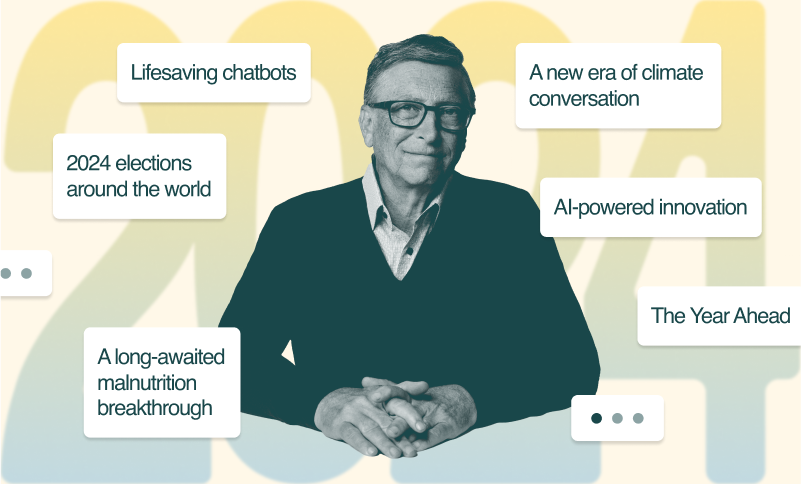Viruses like COVID-19 remind us that, for all our differences, everyone in this world is connection.
This year has been a tragic reminder that we need to do a better job of preparing for global threats. The world wasn’t ready for COVID-19. In Melinda’s and my Annual Letter, coming out next month, I’ll write about what we can learn from this pandemic to help us prepare for the next one.
There’s another global disaster we also need to try to prevent: climate change. As I have tried to make clear on this blog over the past two years, we have only some of the tools we need to eliminate the world’s greenhouse gases. We need breakthroughs in the way we generate and store clean electricity, grow food, make things, move around, and heat and cool our buildings, so we can do all these things without adding more greenhouse gases to the atmosphere.
In short, we need to revolutionize the world’s physical economy—and that will take, among other things, a dramatic infusion of ingenuity, funding, and focus from the federal government. No one else has the resources to drive the research we need.
On the funding side, we need a fivefold increase—but the increase is only so substantial because we’d be starting from such a low level. The federal government puts around $7 billion a year into clean-energy research, versus more than $35 billion a year into medical research. Putting energy on equal footing with health would be a key first step that would create more than 370,000 jobs while also advancing a clean-energy agenda.
To be fair, the U.S. isn’t the only country that underfunds clean energy research. All the governments in the world spend about $22 billion a year on it, or around 0.02 percent of the global economy. Americans spend more than that on gasoline in a single month.
“There’s no central office that’s responsible for evaluating and nurturing great ideas.”
But merely funneling more money into research won’t be enough. We also need to make sure the government is set up to make the best use of these resources, and right now, it isn’t. There’s no central office that’s responsible for evaluating and nurturing great ideas. For example, research on clean fuels is managed by offices in the departments of Energy, Transportation, and Defense—and even NASA. Similarly, responsibility for research on energy storage is spread across at least four offices in the Department of Energy.
There is a better way. To reduce duplication, focus the government’s efforts, and get the most innovation out of every dollar of funding, we should create a new organization: the National Institutes of Energy Innovation. This the most important thing the U.S. can do to lead the world in innovations that will solve climate change.
Creating these institutes wouldn’t be an exercise in simply moving boxes around an organizational chart and hoping for a better outcome. We actually have a model for setting things up in a better way, and evidence that it produces results. That model is the National Institutes of Health.
The NIH is the largest single funder of biomedical research in the world, and its impact is simply mind-blowing. Scientists supported by the NIH have mapped the human genome, resulting in tests or treatments for dozens of genetic diseases. They have helped cut deaths from heart disease by two thirds in the past 50 years. Since 1980, NIH-supported research has contributed to the discovery of more than 150 new drugs, vaccines, and novel uses for existing drugs. The Gates Foundation’s work in global health simply would not be possible without the countless advances made by the NIH.
Why is the NIH so successful? It has a clear and specific mission. It has apolitical leaders who let independent researchers follow the science, rather than political staff who change priorities every few years. It’s organized in a way that empowers each of its separate institutes and research centers. And it has strong bipartisan support from policymakers and the public.
Those lessons should guide the creation of the National Institutes of Energy Innovation. Specifically:
- It should be made up of separate institutes that focus on specific areas. An Institute of Transportation Decarbonization, for example, would have a mandate and budget to invent low-carbon fuels for hard-to-decarbonize activities such as aviation and maritime shipping. Unlike the current structure, there would be a single chain of command responsible for meeting this goal. Other institutes would have similar responsibilities and authority for research on energy storage, renewables, carbon capture and management, and so on.
- Each institute should be tasked with working on every aspect of getting new products to market, from basic research to commercialization. It’s not enough to develop a new way to store electricity that works in the lab—to have any impact, it has to be practical and affordable in real-world settings. The best way to ensure that is to encourage scientists to start their research with an end-use in mind, and that there’s a system in place to make sure the best ideas make it to market and reach scale.
- The institutes should be located all around the country, the way the DOE’s national labs are now. There’s no good reason to limit the benefits of the innovation economy to Washington, D.C., or major research hubs like Boston and San Francisco.
To be sure, creating the National Institutes of Energy Innovation is not the only step we should take. We also need to increase the demand for new clean-energy tools and lower their prices. As I argued recently, we can accomplish both through innovation and through public policies like tax incentives and clean energy standards. (This is one of the core ideas in my book on climate change.)
There are also shorter-term steps we can take while plans for the National Institutes come together. For example, the U.S. House and Senate have taken up legislation (the Clean Energy Innovation and Jobs Act and the American Energy Innovation Act) that would help the federal government move toward a more nimble and focused setup. Neither act has become law yet, but I’m hopeful that in the coming months and years we will see progress on these and other efforts.
I do believe we can avoid a climate disaster—if we deploy the clean-energy tools we have now wisely, and if we make big breakthroughs that touch every aspect of our physical economy. Creating the National Institutes of Energy Innovation would put us on the right path.





